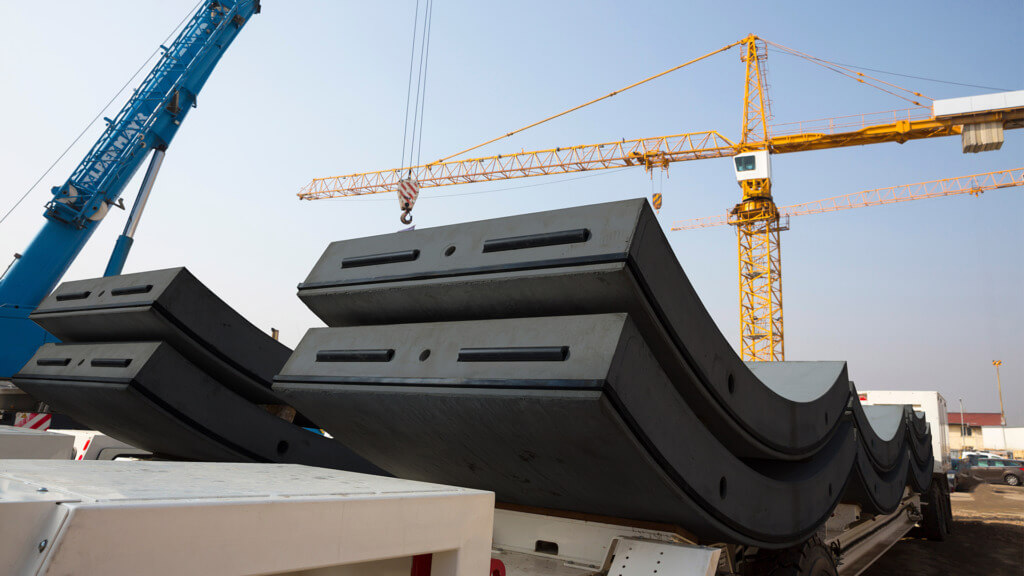

The building industry is taking important steps in becoming circular and the demand for sustainable materials is growing. Our carbon products are a great ingredient in the development of a circular product portfolio. We collaborate with product developers to produce sustainable carbon additives with a Net Zero impact. Providing the building industry with the circular solutions they require.
We at Perpetual Next see it as our beautiful task to help you renew your industry. Get in touch with our experts, so we can discuss how to grow your portfolio with circular offerings. And with that, reduce your carbon footprint, as well as that of your customers.
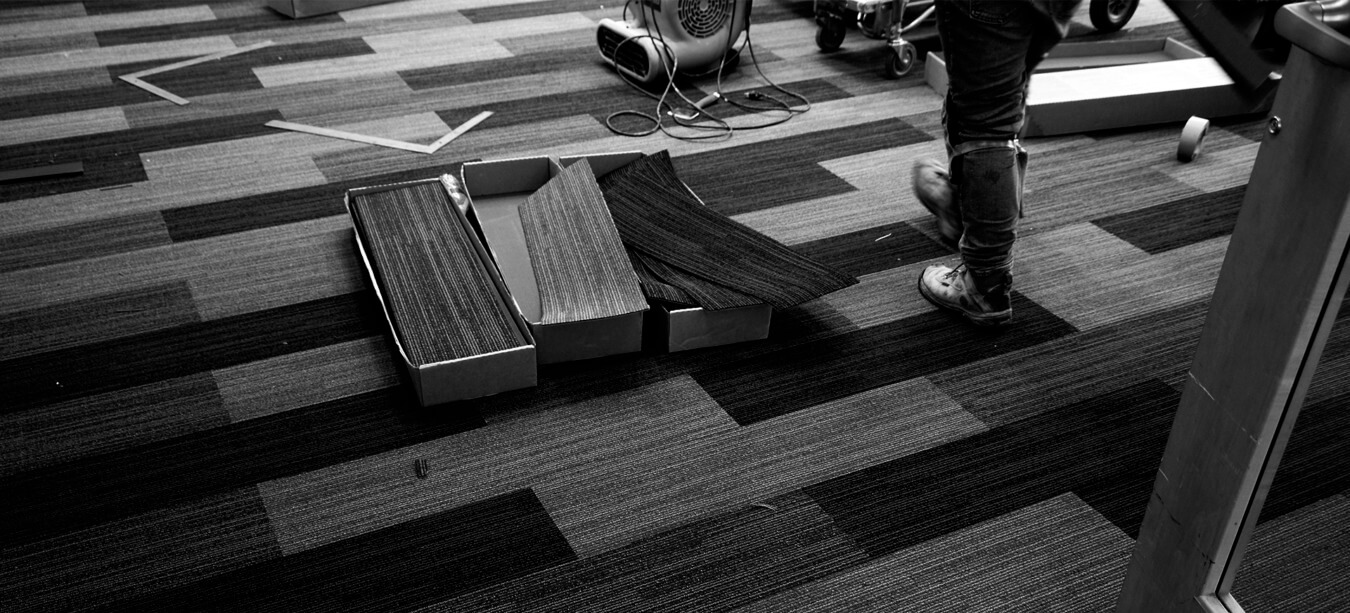
“To become a carbon negative enterprise by 2040, we must store more carbon than we emit without the use of offsets.
Along the way, we continue to transform our own operations and materials, and partner with our suppliers to further reduce Scope 3 emissions.
If we can do it, every company can. We continue to invite others to join us as we work to reverse global warming and create a climate fit for life.”
- CEO from flooring industry
Biochar is a carbon capture product. It is produced through intensive thermal treatment of woody residues in the absence of oxygen. This results in a significant reduction in the volatile matter content, making it rich in stable carbon. Because of the high stability of the carbon, Biochar Carbon Removal (BCR) is a viable and highly scalable Carbon Dioxide Removal (CDR) solution.
Our Perpetual Carbon biochar is EBC-certified and therefore eligible for carbon removal credits. These carbon credits are valuable to yourself or your clients as these are the certified evidence for your carbon footprint reduction.
Biochar can be used as an additive for the following sectors:
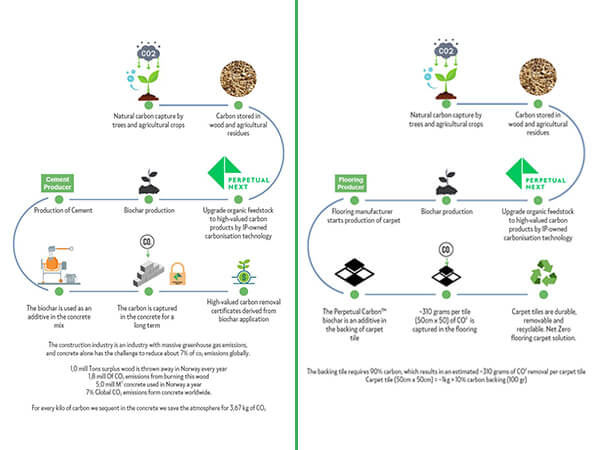
Carbon removal with biochar for the building industry
Biochar consists of 75–90% pure and stable carbon. With a simple molecular analysis, the stability of biochar can be determined and thus the carbon sink potential can be calculated. Besides the direct carbon sink, biochar also has excellent insulating properties and offers protection against electromagnetic radiation and reduction for electrostatic charging.
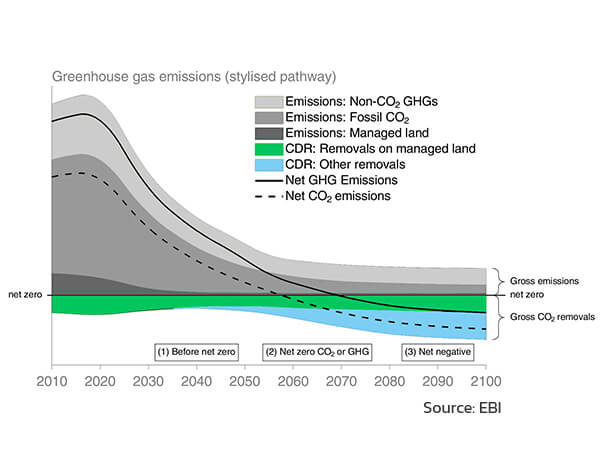
Perpetual Carbon Biochar AddCQuest is an ideal product for a variety of uses. The product has excellent insulating qualities, it improves air quality, it soaks up humidity ánd protects from radiation.
Biochar can also be used as a pigmentation tool for concrete or other building supplements like mortar, plaster and bricks. It allows building materials to store carbon which otherwise would end up in the atmosphere.
Biochar offers the following advantages:

We seek to understand your process and your challenge. Thanks to our advanced R&D, we can provide solutions in the form of renewable carbon products and renewable carbon technologies for your production process.
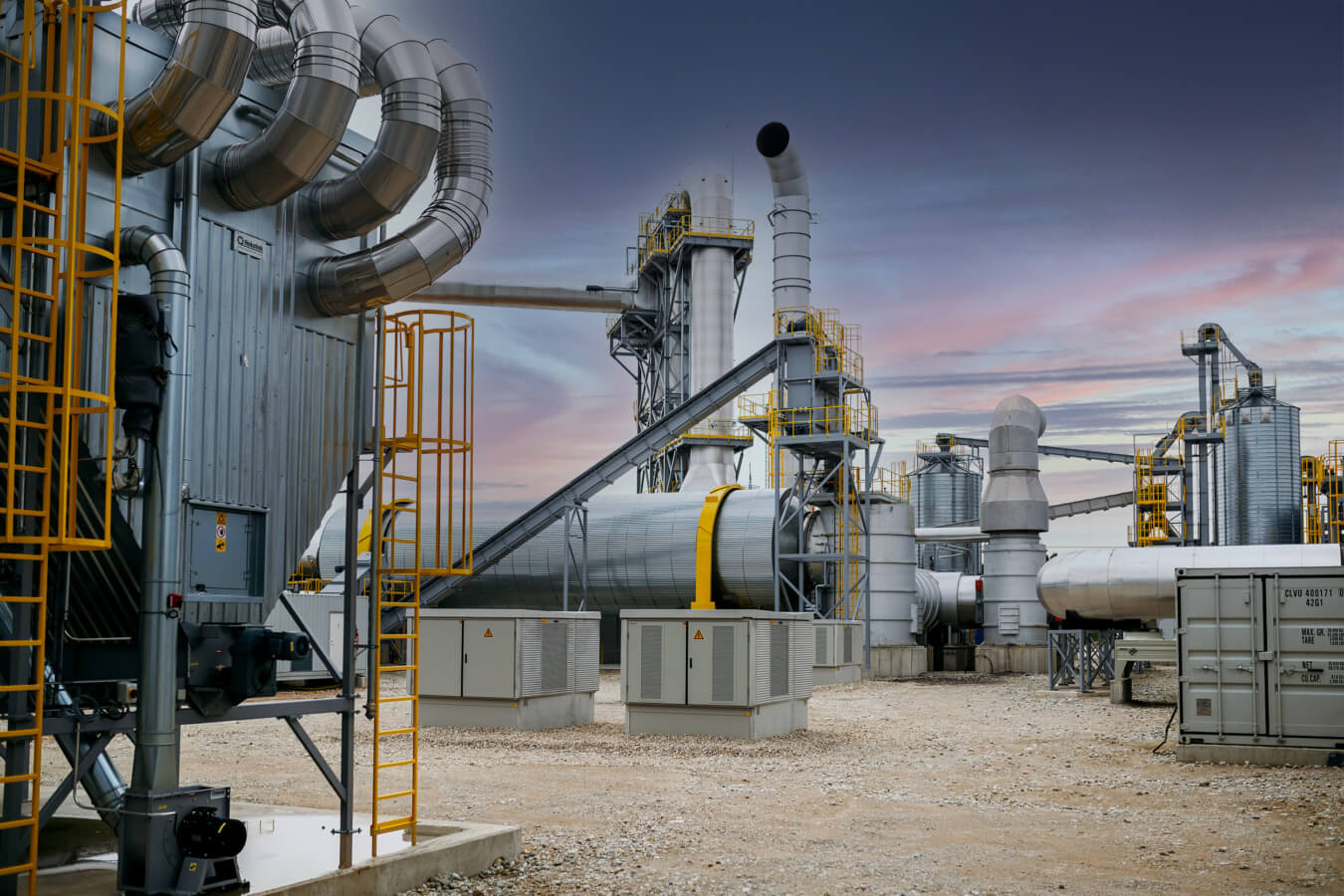
Organic residues to biocoal
In Vägari, Estonia, a biocoal plant based on Perpetual Next's C-Vertr V technology has been under construction since 2020. A total of eight to ten reactors will be installed in the plant, capable of producing 120 kilotons of biocoal per year.
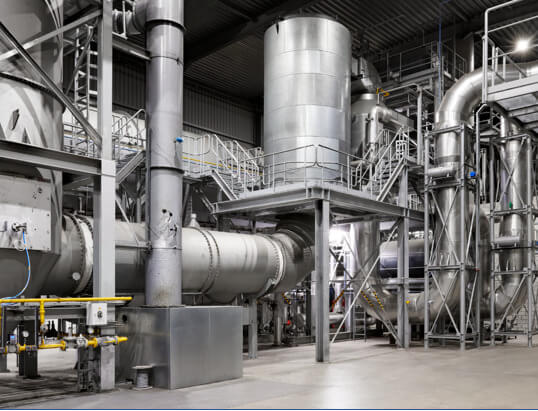
Organic residues, B-wood & SRF to biocarbon
In Dilsen-Stokkem, Belgium, a biocoal plant based on Perpetual Next's C-Vertr R technology has been in operation since 2010. This site has a design capacity of 27,700 t/y of biocoal output.
This section contains a selection of our most relevant technical papers in the field of carbonisation for this segment application. These technical papers are mostly papers from our own Perpetual Next experts.
For all our technical papers, please visit our Knowledge page.

Tabel
At Perpetual Next, we continue to analyse different types of feedstocks, options from different feedstock baskets, with different properties. All feedstocks have their advantages, it all depends on which bias you look at an opportunity. This document is the shortlist of feedstocks we have looked at so far in more detail.
This section contains a selection of the most relevant scientific papers in the field of carbonisation for this segment application. These scientific papers are made by scientist in the field of carbonisation. So these downloads are conducted by others.
For all our technical papers, please visit our Knowledge page.
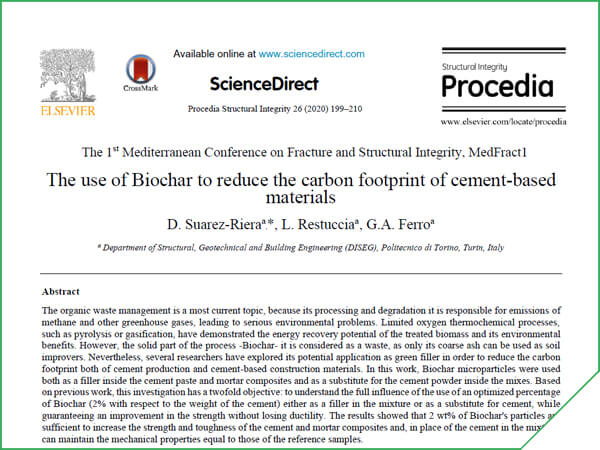
D. Suarez-Rieraa, L. Restuccia, G.A. Ferro
The organic waste management is a most current topic, because its processing and degradation it is responsible for emissions of methane and other greenhouse gases, leading to serious environmental problems...
This section contains our position papers. These position papers are documents that present an arguable opinion in the field of carbonisation.
For all our technical papers, please visit our Knowledge page.
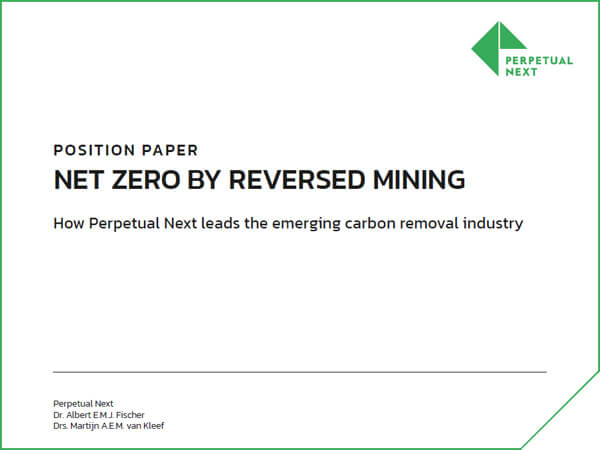
How Perpetual Next leads the emerging carbon removal industry
Greenhouse gas emissions are caused by human action and also by nature itself. It is mainly the exhaust gases from the combustion of fossil fuels that pollute the atmosphere with carbon that was previously stored in...
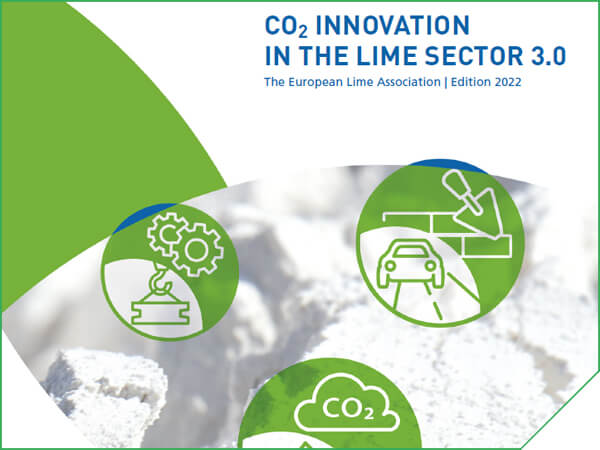
External paper
Lime and limestone are basic enabling compounds which are necessary to many other industrial value chains, such as air pollution control, purifying drinking water, wastewater, support sustainable agriculture, enable...
This section contains a selection of our specification (spec) sheets. A spec sheet, or data sheet, summarises the performance and other characteristics of a specific form and grade of Perpetual Carbon.
For all our technical papers, please visit our Knowledge page.
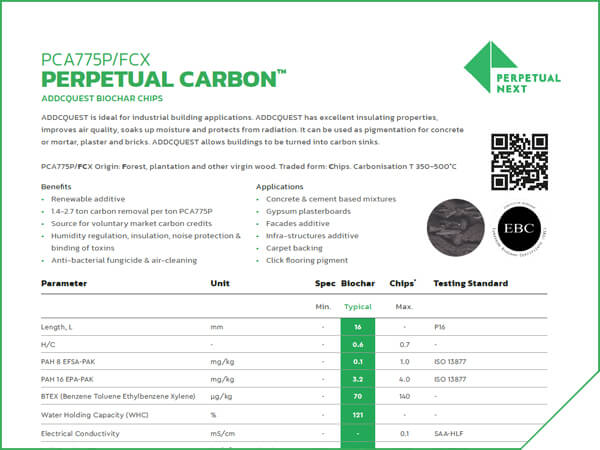
AddQuest biochar chips
ADDCQUEST is ideal for industrial building applications. ADDCQUEST has excellent insulating properties, improves air quality, soaks up moisture and protects from radiation. It can be used as pigmentation for concrete or mortar, plaster...
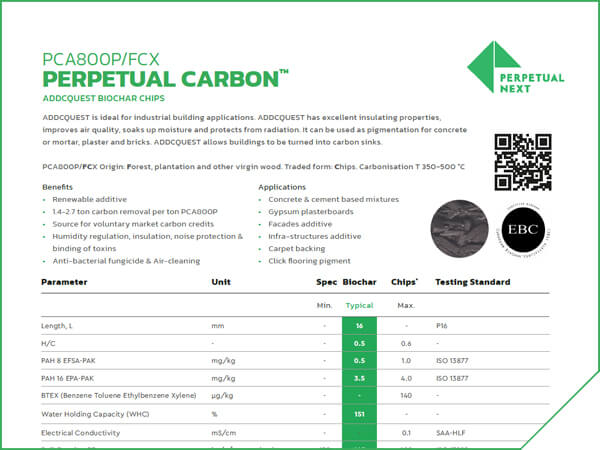
AddQuest biochar chips
ADDCQUEST is ideal for industrial building applications. ADDCQUEST has excellent insulating properties, improves air quality, soaks up moisture and protects from radiation. It can be used as pigmentation for concrete or...
This section contains a selection of our safety data sheets (SDS). The SDS include information such as the properties of each chemical, the physical and environmental health hazards, protective measures and safety precautions for handling, storing, and transporting the chemical.
For all our technical papers, please visit our Knowledge page.
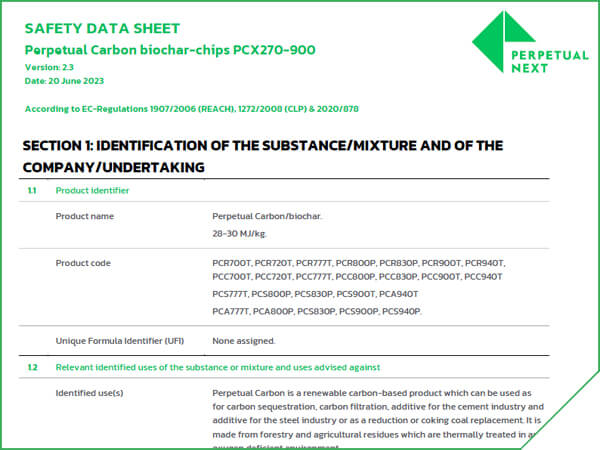
Safety data sheet
This SDS (formerly MSDS or Material Safety Data Sheet) is about Perpetual Carbon biochar-chips with a volume ≤ 3 m3 with typenumber references PCX270-900. It includes the properties of each chemical, the physical, health, and environmental health hazards, protective measures, and safety precautions for handling, storing, and transporting this material.